Flipboard has been used to gather some of the world’s greatest minds together to order to increase awareness, share information, and open our minds to knowledge not often seen throughout mainstream media.
In this Flipboard Find by Ewen Callaway, we learn more about What DNA reveals about St Helena’s freed slaves
In 1849, Anglican bishop Robert Gray described a slave ship being unloaded on the island of St Helena. “I never beheld a more piteous sight,” he observed of the people on board. Some were dead; many more were close to it. “They had a worn look and wasted appearance, and were moved into the boats like bales of goods, apparently without any will of their own.”
These men and women were refugees of the British Navy’s campaign against the slave trade. The United Kingdom had outlawed the trade in 1807, and anti-slaver patrols were intercepting boats along the Middle Passage — the trade route from Africa to the Americas — even venturing into the harbour of Rio de Janeiro. Situated in the middle of the Atlantic Ocean, St Helena became a favoured drop-off point for people freed from the ships. From 1840 to the late 1860s, scores of ships carrying some 27,000 slaves were captured and brought to the island. The slaves who survived were granted freedom and most were eventually relocated, but for nearly 10,000, many of them children, a rocky valley on St Helena became their final resting place.
LISTEN
A burial ground on a remote island sheds light on the horrors of nineteenth-century slavery.
You may need a more recent browser or to install the latest version of the Adobe Flash Plugin.
These people’s lives had been all but forgotten until a decade ago, when a construction project unearthed a couple of skeletons. An archaeological excavation found hundreds more. Now, a team of researchers is studying the remains and sequencing DNA that spent more than a century underground to find out as much as it can about the freed slaves of St Helena: from their birthplaces in Africa to their cultural backgrounds and how they died.
The site’s unique place in history could provide important missing information about the experiences and identities of those who were kidnapped but never reached the Americas, says Fatimah Jackson, a biological anthropologist at Howard University in Washington DC, who is sequencing ancient DNA from other slave burial sites. The work has special significance for Jackson, who traces her own heritage to Africa. “We are descendants of people who came through the Middle Passage, American slavery and institutionalized segregation, and in the process lost a lot of details of our identity and our heritage,” she says. “Ancient DNA gives us a glimmer into a past we’ve longed for, but not had direct access to.”
Valley of lost souls
Rupert’s Valley is a seaside gorge on the remote isle where Napoleon Bonaparte spent his final days in exile. Driving through it, you pass warehouses, a small diesel power station and a fish-processing plant, as well as a few houses and a lone church.
The valley is also dotted with crumbling reminders of its past, such as a metre-wide defensive wall built by the British East India Company and a late-nineteenth-century desalination plant that supported a prison camp during the Second Boer War. But aside from a nondescript stone building, there is little visible reminder of the thousands of former slaves who once resided here.
In November 2006, geologist David Shilston came to St Helena by boat from Cape Town, South Africa — a five-day journey and one of the only ways to reach the island. His employer, the engineering firm Atkins, had been hired to plan an access road for the construction of the island’s first airport. Shilston’s job was to explore the geology beneath it. The digging had just begun when a worker called him over, pointing out a broken human leg bone sticking out of the ground. “I thought it might have been a child. It looked pretty small,” Shilston says.
Historical records illustrate the dire condition in which many newly liberated slaves arrived. “Their arms and legs were worn down to about the size of a walking-stick,” wrote one witness of an 1861 slave-ship landing. “Many died as they passed from the ship to the boat … there was no time to separate the dead from the living.” Diseases such as smallpox and dysentery killed scores more soon after they landed, and there are oblique references to suicides. Between 1840 and 1849, one-third of the freed slaves, nearly 5,000 people, died. Many of those who survived the camp’s miserable conditions were sent to Jamaica, Trinidad and other British colonies, where they served as indentured workers on sugar plantations.
After Shilston found the first remains of St Helena’s Liberated African Graveyard, as the site is now known, he learned that the burials hadn’t been so much forgotten as ignored by many of St Helena’s residents. His discovery made the front page of a local newspaper. “There is no doubt that numerous remains of human bodies will be found,” the story read. “Many believe that the souls of the dead slaves still are haunting Rupert’s.” The remains were stored in small caskets at a local church, and later reburied in a cemetery in the island’s capital, Jamestown.
The UK government’s Department for International Development was footing the £250-million (US$310-million) bill for the airport (St Helena is a British Overseas Territory). The department wanted the site professionally examined, so in 2007 it sent over Andrew Pearson, a commercial archaeologist based in Cardiff, UK. He identified two distinct burial locations, smack in the middle of the path for the planned road. “I was the bearer of the bad news that they had a large and internationally unique burial right where they wanted to build,” he says.

Andrew Pearson/Ben Jeffs/Rupert’s Valley Archaeological Project
One of the liberated slaves buried in Rupert’s Valley. Few of the bodies were found in coffins; most were buried directly in the earth.
Given instructions to excavate only the skeletons beneath the planned road, Pearson and his colleague Ben Jeffs returned to St Helena the following year with a team of 5 people; it quickly swelled to 15 when the size of the task became clear. The first graves that the group excavated were densely packed together, and some contained as many as six skeletons. Pearson’s team spent 4 months exhuming 325 individuals from a 1,800-square-metre plot and boxing them up for later examination in Jamestown. More than half looked as if they were under 18, and the largest demographic group was children aged 12 and younger. Pearson estimates that a total of 8,000 people were buried across the entire valley.
North and South America and the Caribbean islands are full of burial sites related to the transatlantic slave trade, but these tend to hold multiple generations of slaves: some born in Africa and others in the Americas. Rupert’s Valley, by contrast, contains physical evidence of the individuals who were sold into slavery and then freed. It therefore has the potential to indicate not only where slaves came from and their condition aboard the ships, but also how the slave trade might have reshaped their identities. “It’s literally people who are kidnapped in Africa, weeks before,” says Pearson. “So you actually have a snapshot of the Middle Passage, which in other ways is completely intangible.”
Hidden identity
Hannes Schroeder, an ancient-DNA researcher at the University of Copenhagen, first encountered archaeological remnants of the slave trade during an excavation in the Virgin Islands as an undergraduate. The site he was working on dated to before the arrival of Europeans in the Americas, but it happened to abut an overgrown eighteenth-century plantation. He and a friend spent their weekends investigating the plantation, and identified the remnants of the great house, slave quarters and other landmarks. “There was this site, forgotten, but it was important in terms of the history of the island,” he says. “That had a very profound effect on me.”
In 2009, as he was starting a postdoc in Copenhagen, Schroeder started to think about determining where slaves had actually come from by looking at their genomes. The history of the roughly 12 million Africans kidnapped as part of the slave trade is based largely on maritime records — including a database of nearly 36,000 voyages. These are largely transactional and generally mention only a slave’s port of departure from Africa, not their ethnicity or geographic origins, which could lie hundreds of kilometres from where they were sold. But DNA collected from remains and matched to a genome database of modern Africans could, Schroeder realized, link victims of the slave trade to their homelands.

Source: A. Pearson et al. Infernal Traffic (Council for British Archaeology, 2011)
It was a challenging proposition for two reasons. First, although scientists have recovered readable bits of DNA dating back hundreds of thousands of years, most of the success has come from sites in northern Europe, Siberia or North America. No one has had much luck sequencing ancient DNA from tropical locations, because heat and humidity hasten the breakdown of biomolecules. Second, the genetics community has historically failed to fully represent the genomic diversity of modern Africa in databases. Even if high-quality sequences could be obtained from slave burial sites, it would be difficult to link them to contemporary populations with much precision.
But Schroeder persevered. In 2011, he and his colleagues won a €4-million (US$5.8-million) grant from the European Commission to apply scientific approaches to the study of the transatlantic slave trade, and he and others are now sequencing remains from half a dozen slave burial sites, including those on St Helena.
The first bones that the team analysed were from three individuals discovered by construction workers in the Dutch territory of Saint Martin in the Caribbean. Carbon dating suggested that the two men and one woman died between 1660 and 1688, when records showed at least one slave ship arriving at the island. All three had their incisors filed or chipped to points, hinting that they were born in Africa, where tooth modification was a common rite of passage among many ethnic groups. Using molecular techniques that ‘fish out’ bona fide ancient human DNA from the microbial genetic material that invades bones after death, Schroeder’s team managed to recover partial genome sequences for each person.
Comparisons with DNA from 11 contemporary African groups suggested that one of the St Martin individuals was most closely related to members of a Bantu-speaking ethnic group in northern Cameroon called the Bamoun, whereas the other two had DNA in common with ethnic groups that now live in Nigeria and Ghana, including the Igbo and Brong. Schroeder is hesitant to conclude that they belonged to these groups, but the findings, published last year ( et al. Proc. Natl Acad. Sci. USA 112, 3669–3673; 2015), gave him hope that ancient DNA could offer genuine insights into the genetic ancestry of slaves, as well as how the Middle Passage reshaped their identities. “These three individuals — despite the fact that they were found buried together and may have arrived on the same vessel — had different ethnic backgrounds” and probably spoke distinct languages, he says. “That makes you think: how did they communicate with each other and what does this mean for the formation of new identities in the Americas?”
Rupert’s Valley was probably even more polyglot. Shipping records suggest that slave ships that landed in St Helena had embarked from ports across Central and West Africa, including present-day Angola and the Congo region (see ‘The route to Rupert’s Valley‘). There are indications that some individuals came from much further away, including Mozambique and even Madagascar. One 1840s observer noted a group of 40 “natives of the interior”, who had travelled for several months to reach the Atlantic coast. “They are of so many different tribes and districts that it would be curious, if one knew the languages, to trace them out,” said another visitor to Rupert’s Valley.
The former slaves’ DNA backs up the observation. Schroeder and Marcela Sandoval Velasco, a palaeogeneticist at the University of Copenhagen, collected DNA from the teeth of 63 individuals and sequenced partial genomes from 20 of the best-preserved samples. Comparisons with contemporary African populations suggested that the liberated slaves came from diverse African backgrounds. A few individuals shared ancestry with contemporary West and Central African ethnic groups such as the Bamoun and Kongo, but for most, none of the African groups that the team compared them with was an especially close match. Schroeder attributes that to a lack of genomic data from places such as Angola and Mozambique.

Annsofie Witkin/Rupert’s Valley Archeological Project
Dental modifications can signal where a person originated from, but also reflect cultural exchange between kidnapped Africans.
Alternative evidence
Schroeder is frustrated that his team cannot yet pinpoint where the liberated slaves of St Helena were from, nor link them closely to any contemporary population. But he is confident that, eventually, their genomes will help to narrow down that search. Several biomedical projects are sequencing the genomes of lots of people from across sub-Saharan Africa. “It won’t take long,” he says.
Until then, he and his colleagues are following other leads to trace the origins of the 325 liberated slaves and — equally important, they say — to fill in details about their lives. Levels of certain chemical isotopes, including strontium, in teeth vary depending on local geochemistry, offering clues to where individuals lived as children, when their adult teeth were formed.
Judy Watson, a PhD student at the University of Bristol, UK, who is collaborating with Schroeder’s group, has found that groups of individuals in Rupert’s Valley had similar isotope levels, as if they had grown up in the same area.“That could be evidence for people being picked up, not just as individuals, but as groups of people from the same region,” says Kate Robson-Brown, a biological anthropologist who leads the Bristol group. And if genome analysis can link the liberated slaves to broad modern populations, isotope levels — which can vary enormously between nearby areas — could narrow down their geographical origins. With Pearson’s help, Watson has even drawn up a list of potential slave ships and ports of departure, based on coins and other archaeological evidence that suggest the individuals recovered from Rupert’s Valley died in the 1840s.
“Ancient DNA gives us a glimmer into a past we’ve longed for, but not had direct access to.”
In the quest to learn as much as possible about the lives of the former slaves, the team is also looking at other lines of evidence. “Isotopes and genetics are not going to tell us about the social identity of that person,” says Robson-Brown.
For instance, a graduate student in her lab, Erna Johannesdottir, is examining the variety of cultural tooth modifications seen in the remains. Specific modifications could hint at the bearers’ ethnic affiliations, especially when compared with the genome data. Some of the modifications seem to have been performed not long before the individuals died, Robson-Brown notes, possibly even aboard the slave ship. “It’s not impossible to imagine that these young people are developing kinship groupings among themselves during this process of capture, enslavement and shipping and all these awful things. That, to me, is such a strong message of the human spirit and resilience.”
Scholars of the transatlantic slave trade are eager to weave these insights into their research, says David Richardson, an economic historian at the University of Hull, UK, who is working with the team. “Historians are fascinated by issues of identity and also by issues of cultural adaptation and cultural legacies. This is all part of the transatlantic slave trade.”
Ancestral links
DNA research into the slave trade may also reshape how people think about the trade’s legacy. “It’s a very personal thing for us,” says Jackson “It’s not just ancient DNA. It’s ancient DNA of potential ancestors.” Even if it never becomes possible to link former slaves to their living descendants through DNA, the mere presence of genetic material holds power, Jackson says. “Ancient DNA research allows us to connect with history, both the good and bad, and reconcile it with our own identity.”
Sociologist Alondra Nelson at Columbia University in New York City says that this kind of genetic root-seeking started around 1991, with the discovery of a slave burial site in lower Manhattan thought to hold between 10,000 and 20,000 individuals. Mitochondrial DNA analysis (some of it by Jackson) could not say much about the individuals recovered from the site, except that they carried maternal markers common in Africa. But even years before this tentative genetic link was made, people claiming that they had connections to the buried individuals had come forward. A group called Descendants of the African Burial Ground criticized politicians and researchers for mishandling the remains.
Pearson worried that the excavations in Rupert’s Valley would draw a similar response from the island’s residents (known locally as Saints), many of whom are descended from earlier slave populations, the Chinese indentured workers who replaced them, and British settlers.
“I thought we’d have terrible trouble — descendants coming up asking, ‘How are you doing this to my people?’,” he says. But no one ever came forward. “I think people probably chose not to emphasize their black heritage, and it’s just been lost.”
Although St Helena’s airport has been completed, its wind-blasted runway has yet to receive regular commercial flights — and it may never do so. The fate of the remains of the liberated slaves is similarly in question. In 2015, St Helena’s government conducted a survey of residents, asking what to do with the skeletons. Options ranged from maintaining them as a research resource to repatriating them to a yet-to-be-determined location in Africa (a proposition that, even if their origins could be pinpointed, would be filled with political and logistical hurdles, Pearson notes). The vast majority wanted them put back to rest in Rupert’s Valley — and many indicated that it should be done as soon as possible.
As much as researchers could still learn from the bones, Pearson agrees with the will of the Saints, and hopes to return to St Helena to help with reburial. “These people have had such an awful end-of-life experience. What final indignity at the hands of white people to be stuck in a lab for perpetuity.”
In 1864, Rupert’s Valley received its last six liberated slaves from a ship so damaged that the Royal Navy left it to sink. The refugee camp was disbanded in 1867.
Historians are ambivalent about the campaign to intercept and prosecute slave traders. It probably hastened the end of the transatlantic slave trade in Brazil and Cuba, the last holdouts of a dark chapter in human history. But the people liberated by the British Navy who eventually left St Helena may have considered their fates — working in foreign lands or fighting other people’s wars — merely an extension of their enslavement.
Then there were those who remained. Several hundred liberated Africans eventually integrated into St Helena’s population. An 1881 census recorded 77 people whose birthplace was listed as “West Coast of Africa”.
Their lives are not easy to imagine — ripped from their homelands, saved from enslavement but left on a remote island. Free but exiled. One turn-of-the-century photograph shows five of them: three seated women and two men, all residents of the poorhouse. “The men, although over seventy, are still able to earn a little, but the women are helpless, and almost blind,” reads a caption from the time. They had arrived on the Cyclops, a naval vessel that last visited St Helena half a century earlier. It is the final picture ever taken of St Helena’s liberated slaves, but DNA may soon offer one more.









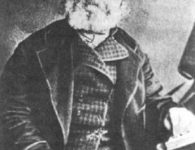
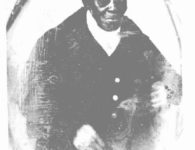
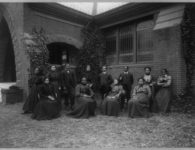
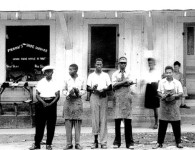

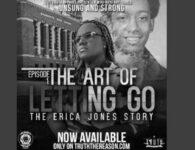



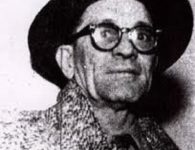

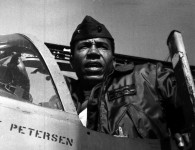

No comments